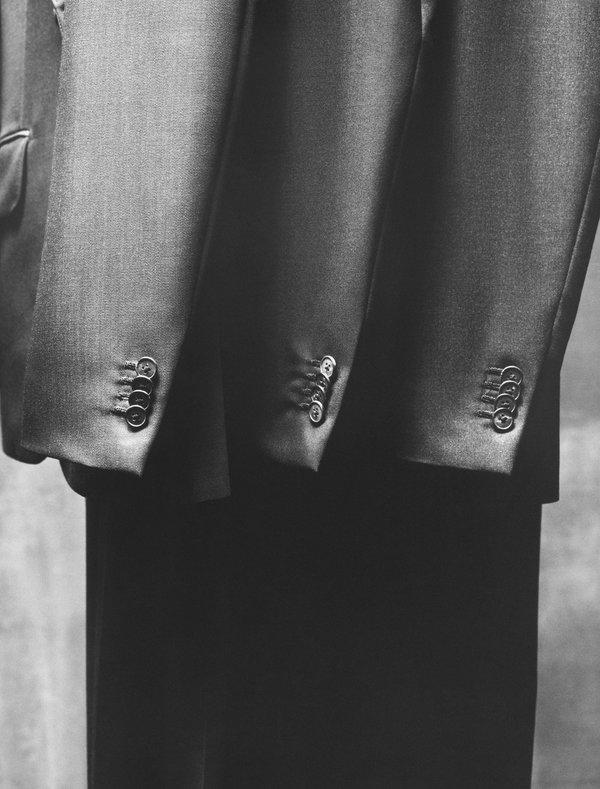Ladies first. Men’s wear to follow. A number of fashion designers who have made a name for themselves for their women’s wear lines are turning their attention to men. On Sunday evening, at Spring Studios, during New York Fashion Week’s women’s ready-to-wear collections, the designer Prabal Gurung, will debut a men’s wear line alongside his women’s wear, which he first launched in 2009. This October, Mary-Kate and Ashley Olsen’s the Row will offer its first men’s wear collection directly through retailers. Speculation surrounds Hedi Slimane, who will present his first men’s and women’s collections at Paris Fashion Week for Céline since taking over the house — which until now only released clothing for women. And earlier this summer, the French designer Simon Porte Jacquemus, of Jacquemus, showed his first men’s wear collection in Calanque de Sormiou, a seaside cove located on the outskirts of Marseille.
It would be slightly misleading to say that there was a conspiracy between any of these designers, whose aesthetics and attitudes are as different from each other as Bruce Springsteen is from, say, FKA twigs. Gurung’s free-spirited sensibility — and his outspoken runway activism, which accompanies his colorful, modern clothes — is nothing like the Row’s restrained sense of luxury, voluminous proportions and discreet hues. The constellation of new male-focused ventures, however, gestures at several larger shifts in the culture. In part, the arrival of more men’s wear lines speaks to the expanding consumer market: Men like fashion, too. But bolder men’s looks are also appearing on the street, thanks to rising brands such as Eckhaus Latta and Telfar, whose clothes for men emphasize the wearer’s silhouette with sheer or knit fabrics, crop tops, deep necklines and slender trousers as much as women’s wear — if not more. It also appears that the flexibility of how collections are shown today — as popularized by Gucci in 2017, when its creative director, Alessandro Michele, announced that he would simultaneously unveil men’s wear and women’s wear — has made it easier to show both collections to a discerning audience of editors, buyers and whoever else is watching on social media. “It seems only natural to me to present my men’s and women’s collections together,” Michele told Women’s Wear Daily in 2017, after he announced the change. “It’s the way I see the world today.”
Gurung couldn’t agree more. His plan, from the time he launched his brand, was to move into men’s wear, but the timing was also important. “The world we are living in right now is a multifaceted one where roles, genders and traditional gender identifiers are breaking down,” he wrote in an email. “With all we do to promote diversity and be an inclusive brand, it felt time that we expand our offering to include men’s.” Gurung added that he has observed the rise of streetwear culture, and with it an opportunity for men to express themselves in a more casual range of clothes such as shorts, anoraks, T-shirts and slinky knits. “I see and talk to so many men who use fashion, or want to use fashion, as a language to communicate their individuality and their ideals,” he wrote, “and I’m excited to finally be able to bring them into our world with this new launch.”
A few days before his show, Gurung offered T a first look at the new men’s collection. Final fittings for the Sunday show were in progress at the designer’s studio. The model Winnie Harlow slipped out, waving goodbye. A mood board filled with pictures of the Tharu people — an ethnic group indigenous to the southern foothills of the Himalayas — revealed colors, textures and prints that the designer has translated into his pieces with a sense of playfulness and authority; Gurung is Nepalese, and his origins serve as a huge source of inspiration. (He also proudly manufactures many of his pieces in Nepal.) Pinned to another board were 22 looks — not totally finalized — and they showed a range of appealing options: baggy trousers in a light, bright pink as well as a Big Bird yellow, embroidered pants and tops, as well as shorts and shirts in fuzzy floral prints and plaids that echoed the women’s wear line. Long strands of Nepalese beads were laid out on a table of accessories, ready to be styled on the male models. There were also ribbed-knit tank tops and long-sleeved shirts in bright shades of plum, red, yellow and green, as well as a range of zip-up jackets with hoods that looked a little Zoolander-esque in the best of ways — sporty, boyish and fun.

An image that the Row shared of their inspiration behind their new men’s wear line, which will launch straight to retail this October. CreditCourtesy of the Row
If what early reports about the Row’s men’s wear collection are true — early sightings from the brand’s showroom have revealed meticulous hand tailoring (single-breasted jackets cut without vents; slim, straight-legged trousers with a high waistline) and details such as real mother-of-pearl buttons — then it won’t just be men who will want to buy these clothes. Still, these men’s wear lines consider an alternative way of thinking about how to express masculinity. Savile Row looms large as an influence for nearly all designers, but perhaps the traditional suit — top-heavy and imbued with a sense of old-world power — need not be the only way to show off a man’s physique. And as with Jacquemus, there is the distinct sense that for male designers who have made women’s wear for years, it’s just a little bit more fun to design clothes for yourself — Jacquemus debuted a number of looks for the gadjo, the Romani word for what he described as a hunky Mediterranean guy. Gurung concurs: “And yes, I would absolutely wear each and every piece you’ll be seeing on the runway. A definite upside to this launch in particular!”







